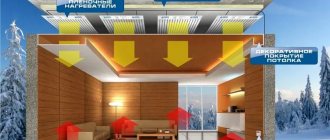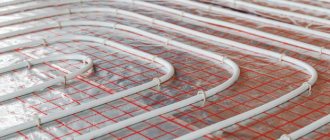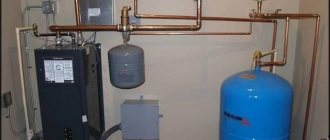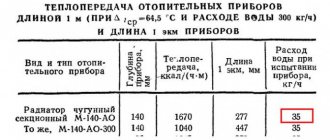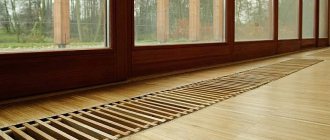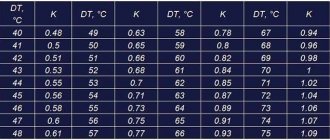COMO
ZIP
Wall panels
Infrared ceiling heating
ZBN
GALAXIS
When we talk about energy saving, for some reason, they mainly mean the materials from which the house is built, but at the same time we often forget that thermal insulation of walls, floors or ceilings is only one aspect of saving. Another equally, and sometimes even more important aspect of energy saving is the competent organization of the heating system. The problem of heating and saving on it primarily concerns large buildings. The huge volume of internal space requires significant energy expenditure, while an incomparably larger part of the heat is spent mainly on heating the upper zone. For example, in a supermarket or gym, ¾ of the entire space is cubic meters of air under the ceiling, which are not used in any way, but are safely heated. That is, with traditional heating, we spend money on heating useless areas, although we could direct the heat to where it is needed. And modern heating technologies give us this opportunity. We are talking about infrared or emitting devices. They radically solved the problem of heat distribution in the house, making it possible to heat, first of all, the lower tier, that is, those areas of the building where people are located.
Operating principle of infrared heating
IR radiation is electromagnetic waves that are invisible to the human eye. These waves are also called “thermal”; this is exactly how they affect our perception, and even more so, thermal radiation from the sun works in the same way. The peculiarity of this radiation is that it does not heat the air, but it warms objects - people, animals, furniture, floors. As objects cool down, they give off heat to the air. This ensures a comfortable temperature in the room. The sun heats according to the same principle. It does not heat the air, but objects, which in turn give off heat. And since the sun is not dangerous for living organisms, the same can be said about infrared heating. With proper installation and operation, a person will not feel any negative effect from its use.
Film heaters
Film heater
Film IR heaters are devices used for general or partial heating of a room. They consist of film, foil and heating elements that produce long-wave infrared radiation. The devices also have special sensors that turn off the system when the air temperature reaches a predetermined level, and when it drops below the minimum acceptable level, the heater is activated. Thanks to this, electricity is saved - the device does not just work.
Some film heaters have thermostats with the ability to program the temperature for 24 hours. In this case, while there are no people in the room, the IR device does not turn on, and some time before the owners return, the device starts working and manages to warm up the house. However, such heaters cost significantly more than simple models.
Advantages of infrared heating
The most important advantage of IR technology is that this heating method is extremely economical. While with traditional central heating you need to heat the entire room to warm the people in it, the IR source warms the person and the objects around him. It works immediately after switching on, the room does not need to be preheated. Take a close look at these numbers:
- To heat a room of 16 square meters using an IR source, you need 900 W.
- To heat the same room using an electric heater you need 2 - 2.5 kW.
The numbers speak for themselves.
In addition to saving and rational use of energy, this technology has a number of advantages:
- No radiators or pipes: no problems with freezing or leakage;
- The air is not dried out, oxygen is not burned;
- No need to spend money on periodic restoration or maintenance;
- Long service life - 30-50 years;
- Safety: you are not at risk of fire or electric shock;
- No possibility of accidental injury and burns;
- There is no need to ventilate or install a chimney - there are no combustion products;
- Absolutely silent operation (unlike a boiler or water circulation in a central heating system);
- Minimum amount of space occupied in the room;
- There is no negative impact on the environment because there is no waste;
- During operation, no convection currents are created that move dust indoors;
- The microclimate in the room is stably maintained at a given level, regardless of the weather;
- Possibility of creating several temperature zones in one room;
- Sudden temperature changes in height are excluded (in traditional heating, the temperature in the floor area is significantly lower);
- Possibility of full automation and use of remote control;
- Light weight, easy to transport, simple installation, ability to dismantle for re-installation in another location;
- Record high efficiency;
- High resistance to power surges, which is very important for the private sector.
As you can see, there are a lot of advantages. It’s safe to say that none of the types of heating has the same long list of advantages. Photos from a real site of our company for the installation of infrared heating can be viewed here. Now let's talk about the cons.
Traditional heating system
Radiator
In steam heating systems, hot liquid, usually water, circulates through pipes. The heat source is a radiator, which effectively transfers energy to the air. Convection jets from the heater rise to the ceiling, spread over the area and gradually cool down, descending to the floor.
Thus, in contact with air, the temperature of all objects, walls, and ceilings increases. Of course, the lower part of the room is cooler than the upper part. This difference reaches 5-10 °C.
Heat conversion: heater – liquid – air – consumer.
Disadvantages of infrared heating:
- Ceiling panels are difficult to combine with the interior style, especially with the classic one. The same cannot be said for high-tech or minimalism - they are just right here;
- The need for preliminary design, preferably at the stage of building a house or renovating an apartment. Although, it all depends on the chosen type, we will talk about this later;
- Possibility of overheating due to incorrect power calculation. Specialist consultation and design by an experienced craftsman are required;
- At a set high temperature, the skin may dry out if a person remains in one position for a long time. But this can be easily avoided if you make it a rule not to use high heat for a long time in one place.
That's all its disadvantages. We can say with confidence that with proper installation by specialists, as well as with proper operation, infrared heating does not pose any threat to humans. That is, the main point is the choice of an experienced design and installation specialist.
Still, if we compare the above four disadvantages with the list of disadvantages that are typical for electric heaters and central heating systems, then IR wins significantly. Any type of heating is associated with some disadvantages, but here they can be said to be minimal.
Arrangement of radiant panels
They operate using standard energy and coolants, differing fundamentally only in the method of heat transfer. Their main design feature is the presence of a system of reflectors and insulators installed to direct energy to certain areas. Water radiating ones also consist of tubes with a diameter of 15-28, through which coolant is supplied, and in the summer, coolant. Their perfect design completely eliminates the risk of fire or explosion, so they can be installed in hazardous industries, in the chemical industry and in workshops where flammable materials are used. Thus, they are currently the most economical, environmentally friendly, aesthetic and safest source of heat in the house. They are easy to install, easy to maintain and are designed to save us significant money.
Where is infrared heating used?
Due to their properties, IR panels have a very wide range of applications:
- Warehouses;
- Workshops and industrial buildings;
- Stadiums;
- Train stations and airports;
- Gas stations, car washes, car dealerships;
- Pavilions and exhibition centers;
- Medical institutions;
- Theaters and concert halls;
- Office and administrative premises;
What can we say about the fact that in residential premises they are most relevant in the context of constantly rising electricity prices.
Types and types of IR heaters
Depending on the object of application, the required characteristics, power and temperature conditions, various types of infrared heating can be used. We will look at the most popular ones.
Spot type
Can be used as part of the interior. They look like fluorescent lamps and can be mounted in different places on the bracket. They heat a small part of the room and are used locally. The only drawback of such infrared heating is the price. But in terms of the energy spent on heating, this type pays for itself quite quickly and is still beneficial as an addition to the main system.
Film type
Special IR film is installed under the floor to heat it or on the ceiling. This film does not affect the functionality of the equipment, and the room heats up evenly. This film can also be used as local mobile heating, in the form of a mat. Very convenient for creating a workspace or in the bathroom. IR film can be installed under any coating, even cement screed. Ideal for use in residential areas.
Heating drywall
This is the name for infrared panels built into a wall or ceiling with plasterboard finishing using the frame method. On the back side of the finish there are electrically conductive carbon threads, which are additionally insulated with a polymer coating for heat reflection. These panels are indispensable in the interior. They can be easily used for repairs, just like regular drywall. And by the way, it is recommended to install such infrared heating as backup heating to the central system.
Ceiling panels
Infrared heating of this type is considered the best of all available types today. Mounting on the ceiling does not create any inconvenience with repairs or interiors; the radiation comes from top to bottom. Can be installed in separate zones. For example, in a workshop, when you only need to warm up the workspace, without the area where the machines are located. At the same time, the floor and walls can be used more functionally.
The panel is a compact device, painted with powder dye, and placed in a metal case. Such devices can be installed under any non-stretch ceiling covering. IR panels are almost invulnerable to accidental damage; only water leaks in apartment buildings can be dangerous. And one more disadvantage - such devices heat up household appliances, which can damage them. Therefore, you need to use it rationally and carefully approach the issue of choosing power.
Ceiling IR heaters with water coolant
Warm or hot water (temperature from 40°C to 120°C) is used here as a coolant; it transfers heat to the pipes and the radiating screen. This type of infrared heating is used in industry. Can be used as an alternative energy source. Can also be used in air conditioning mode.
Wall IR panels
They are less efficient than the floor and ceiling type, because heated air, according to physics, always tends upward. Efficiency decreases and energy costs increase slightly. But still, in comparison with electric heating, it is many times more profitable. Wall-mounted IR panels can be used as an additional source in particularly cold areas.
Gas IR heaters
This type works by heating plates made of a heat-resistant composition, inside which an air-gas mixture is burned. Their power is the highest, so the use of this type in residential premises is contraindicated. In addition, the price of such infrared heating is quite high, which makes them in demand only in industrial enterprises or in large facilities such as a shopping center or sports ground.
Myths and facts about PLEN ceiling heating
PLEN heating technology is quite new, and many myths have appeared about it. How true are the popular claims about this heating system?
| Myth | Fact |
| Ceiling heating creates a “warm floor” effect | A wavelength of 9-15 microns when passing 250 cm (usually ceilings are located at this distance from the floor) cannot heat the floor to a temperature of 36 degrees or higher |
| The film helps maintain optimal humidity and fights mold | Infrared radiation cannot affect humidity and does not kill mold |
| Installation will cost significantly (up to 70%) less than installation of water and other heating systems | Not true. The installation of ceiling PLEN heating will cost about the same as convector heating |
| The heat produced by this heating system is more comfortable for humans | According to manufacturers, the optimal temperature under film heaters is about 18 °C. But this does not affect comfort in any way. |
| Long (up to 50 years) service life | Since the technology is quite new, this statement cannot be verified in practice. |
| The film can be covered with any finishing material, excluding metallized | Then most of the rays will heat the finish |
| Film infrared heating is the most economical of all infrared heating systems | PLEN is much higher than other IR heaters |
| PLEN turns on only for 3-15 minutes per hour, due to which electricity consumption is 7 times lower than when operating an electric boiler or convectors | This mode of operation is capable of heating a room and maintaining an acceptable air temperature in it only if the house is insulated so well that heat loss is reduced to almost zero. This is usually not the case, and PLEN will have to work much more often |
| The system is absolutely safe | A breakdown may form in the film |
| No permits are required for installation and operation of the system. | It is necessary to document the allocation of the specified electrical power and update the electrical network if it does not meet the requirements |
Radiation intensity
When choosing infrared heating, you need to be careful with the power of the device. Normally, it should not exceed 350 W per square meter. If the radiating element is not heated above 100°C, then the surface of the heated objects will not be above 35°C. Properly designed and installed IR heaters can distribute heat evenly throughout the home, creating a comfortable microclimate.
Powerful infrared heating over a long period of time is dangerous for the skin and eyes. But household IR devices are adapted and the spectrum is configured for human use in residential conditions.
Air heating system
The most modern option for heating a home, eliminating liquid from the energy conversion chain, is climate control.
This:
- Air heating system;
- Air purification filters;
- Supply ventilation with temperature control
- Exhaust ventilation. Sometimes forced, and in the simplest case natural.
Of course, converting a house for such heating is expensive and difficult: laying the ducts alone is worth it. And the design takes into account not only parameters such as heat loss/heat release, but also the permissibility of noise from units, furniture placement, and air duct topology.
Although, there is one plus: at the same time as the direct task, the issue of cleaning the air from dust is solved.
Heat conversion: heater – air – consumer.
Air heating system diagram
Calorie losses are inevitable at each stage, so shortening the heat conversion chain is an obvious way to save money during operation. This is how infrared panels work.
Conclusion
Infrared heating is a new product on the modern market with great potential. Despite the fact that this technology was invented at the beginning of the last century, it is only now that it is being actively used for heating rooms. In the construction of large facilities, such heating is simply irreplaceable, because it significantly saves energy, is convenient to install and use, and has a number of other advantages. It is safe to say that this is the technology of the future, since in the context of the desire to reduce energy consumption, infrared heating is a big and bold step towards the goal.
Request a call
On-line calculator
